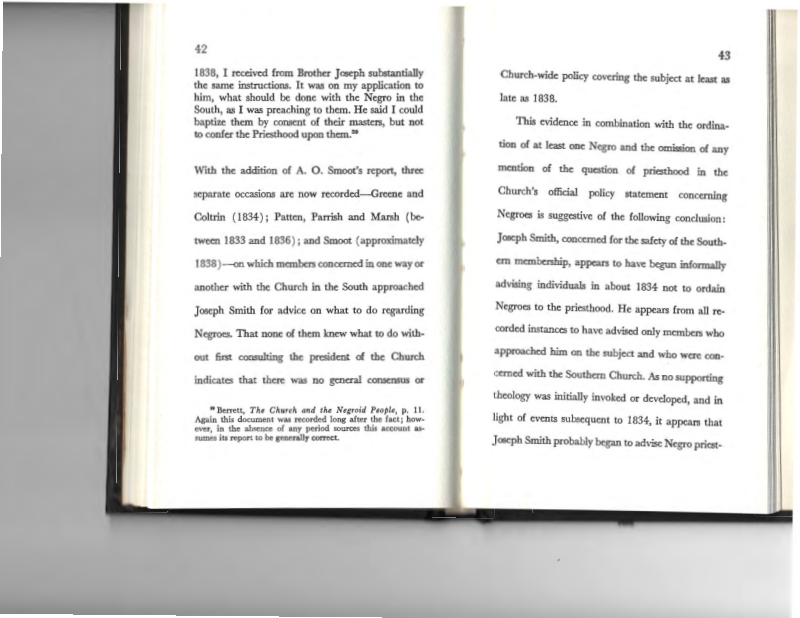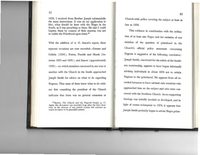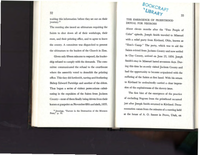Stephen G. Taggart argues that Joseph Smith originated the priesthood/temple ban in response to conditions in the South and later developed a theological justification in the Book of Abraham.
- Type
- Book
- Hearsay
- 2nd Hand
- Reference
Stephen G. Taggart, Mormonism’s Negro Policy: Social and Historical Origins (Salt Lake City, UT: University of Utah Press, 1970), 42–43, 61–63
- Scribe/Publisher
- University of Utah Press
- People
- Stephen G. Taggart, W. W. Patten, John Portineus Greene, Zebedee Coltrin, Abraham O. Smoot, Warren Parrish, Thomas Marsh
- Audience
- General Public
- Transcription
With the addition of A. O. Smoot's report, three separate occasions are now recorded—Greene and Coltrin (1834); Patten, Parrish and Marsh (between 1833 and 1836); and Smoot (approximately 1838)—on which members concerned in one way or another with the Church in the South approached Joseph Smith for advice on what to do regarding Negroes. That none of them knew what to do without first consulting the president of the Church indicates that there was no general consensus or Church-wide policy covering the subject at least as late as 1838.
This evidence in combination with the ordination of at least one Negro and the omission of any mention of the question of priesthood in the Church's official policy statement concerning Negroes is suggestive of the following conclusion: Joseph Smith, concerned for the safety of the Southern membership, appears to have begun informally advising individuals in about 1834 not to ordain Negroes to the priesthood. He appears from all recorded instances to have advised only members who approached him on the subject and who were concerned with the Southern Church. . . .
[O]ne year after his meeting with Greene and Coltrin, Joseph Smith evidently contemplated the development of a theological justification for the practice of denying the priesthood to Negroes and a passage on the subject finally was published as part of The Book of Abraham.
For some reason, however, he did not make these efforts public until 1842. Consequently, ordination of Negroes continued within the Church until as late as 1841.
With the publication of The Book of Abraham, all of the elements for the Church's policy of denying the priesthood to Negroes were present. The curse of Canaan motif borrowed from Southern fundamentalism was being supported within the Church by a foundation of proslavery statements and attitudes which had emerged during the years of crisis in Missouri and by Joseph Smith's precedent-setting and legitimating use of the argument. The extension of the curse of Canaan to include priesthood denial was provided by The Book of Abraham. All that remained necessary for the emergence of a Church-wide policy of priesthood denial for Negroes was public articulation of the policy by Church leaders and acceptance of the argument by the general membership.
The B. H. Roberts Foundation is not owned by, operated by, or affiliated with the Church of Jesus Christ of Latter-day Saints.



